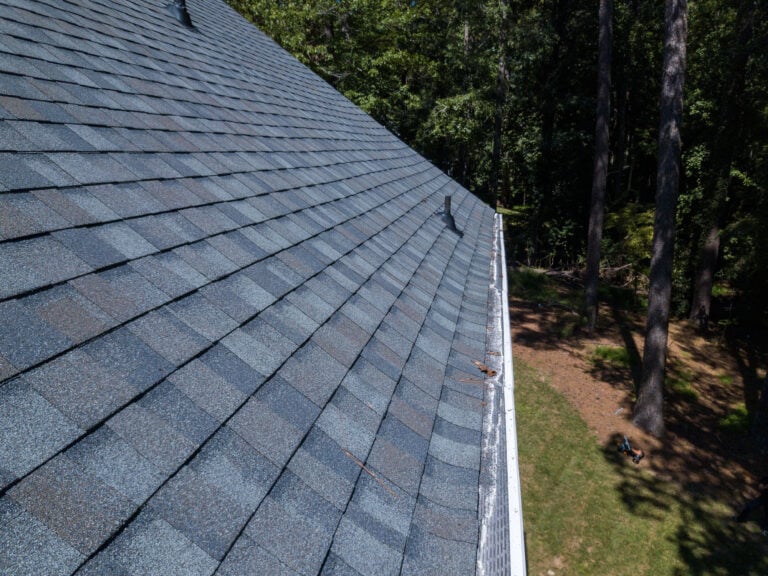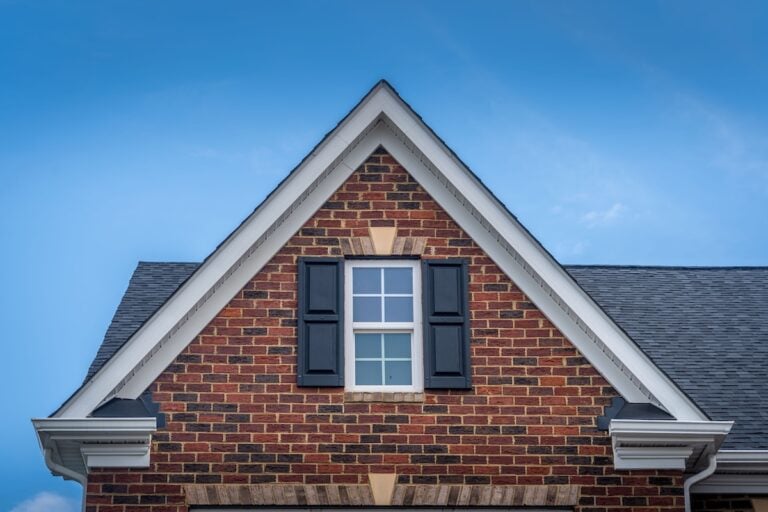Are you ready to tackle a roofing project on your own? Knowing how to calculate roof pitch is a critical step for any homeowner or DIY enthusiast.
Understanding your roof’s pitch can impact everything from:
- The type of materials you use
- The overall design and structural integrity of your home
- The amount of materials you use
This guide will walk you through how to calculate roof pitch, what it is, why it’s important, and when to call in the pros.What is Roof Pitch?
Roof pitch is the measure of the steepness or slope of a roof. It is expressed as a ratio of the rise (vertical height) over the run (horizontal length). For example, a roof with a pitch of 4/12 rises 4 inches for every 12 inches it runs horizontally. This ratio can also be converted to degrees if needed.
Types of Roof Pitch

Roof pitches can vary dramatically. Here are some common types:
- Flat Roof: Typically have pitches between 1/2 to 2/12.
- Low-Slope Roof: Generally fall between 2/12 and 4/12.
- Conventional Slope Roof: Between 4/12 and 9/12.
- Steep-Slope Roof: Anything above 9/12.
Understanding these categories can help you communicate more effectively with contractors and suppliers.

Why Knowing Your Roof Pitch Is Important
Okay, we hear you. You’re just a homeowner, not a roofer. Why do you need to know your roof’s pitch? The answer is: there are lots of reasons! Here are just a few:
Material Selection
Your roof pitch can dictate the types of roofing materials you can use. For example, certain shingles are only suitable for specific pitch ranges. Low-slope roofs may require materials like modified bitumen or single-ply membranes, while steep roofs might be better suited for asphalt shingles or metal roofing.
Water Drainage
A roof’s pitch affects its ability to shed water. Steeper roofs generally allow for better water runoff, reducing the risk of leaks and water damage. Flat or low-slope roofs may require additional waterproofing measures to manage water effectively.
Aesthetic and Design
Like the roof’s color, its pitch significantly affects the overall appearance of your home. A steep roof can give a house a more dramatic, traditional appearance, while a low-slope or flat roof can lend a more modern, sleek look.
Structural Integrity
The roof pitch also impacts the structural load on your home. Steeper roofs can handle heavier snow loads, which is crucial in areas with heavy snowfall. Understanding your roof pitch can help ensure that your home’s structure can support the weight of the roof and any additional loads it may encounter.
How to Calculate Roof Pitch in 5 Steps
Step One: Tools You’ll Need
Before you start, gather the following tools:
- Measuring tape or ruler
- Level (at least 12 inches long)
- Pencil and paper
- Calculator (optional)
Step 2: Measure the Run
Start by placing the level horizontally on one end of the roof. Ensure it’s perfectly level before proceeding. Measure 12 inches along the level from the starting point and mark this spot. This distance represents the “run.”
Step 3: Measure the Rise
Next, measure the vertical distance from the end of your 12-inch mark on the level down to the roof’s surface. This measurement is the “rise.”
Step 4: Calculate the Pitch
Now, you have both the rise and the run. The pitch is calculated by dividing the rise by the run (rise/run). For example, if your rise is 4 inches and the run is 12 inches, the pitch is 4/12.
Step 5: Converting Pitch to Degrees
If you need to convert the pitch to degrees, you can use a simple trigonometric function. The formula is:
\[ \text{Degrees} = \arctan\left(\frac{\text{Rise}}{\text{Run}}\right) \]
Using our previous example (4/12), the calculation would be:
\[ \text{Degrees} = \arctan\left(\frac{4}{12}\right) \]
Plug this into a calculator with an arctan function to get the degree measure.
Example Calculation
To make things clearer, let’s go through an example:
- Measure the Run: Place the level on the roof and mark 12 inches horizontally.
- Measure the Rise: Check the vertical distance at the 12-inch mark. Suppose it measures 6 inches.
- Calculate the Pitch: Pitch = 6/12, which simplifies to 1/2 or 0.5
- Convert to Degrees: Degrees = arctan(0.5) ≈ 26.57 degrees
This means your roof has a pitch of 6/12 or approximately 26.57 degrees.
Common Pitfalls and Mistakes
Even the handiest homeowner can make mistakes. And, unfortunately, when it comes to calculating roff pitch, the mistakes are easy to make. Here are some common mistakes to avoid.
Inaccurate Measurements
One of the most common mistakes is taking inaccurate measurements. Ensure your level is perfectly horizontal and measure carefully to get precise results.
Ignoring Roof Overhangs
Sometimes, DIYers forget to account for roof overhangs, which can skew measurements. Always measure the primary section of the roof, not the overhang.
Misinterpreting Pitch Ratios
Another common pitfall is misunderstanding pitch ratios. Remember that the run is always measured over a 12-inch horizontal distance, regardless of the rise.
Why You Should Hire a Professional

While calculating roof pitch is a task that many homeowners and DIY enthusiasts can handle, there are times when hiring a professional roofer is the best course of action.
- Safety Concerns: Working on a roof can be dangerous, especially if it’s steep or high. Professionals have the necessary safety equipment and experience to handle these conditions.
- Accurate Measurements: Professionals use specialized tools and techniques to ensure measurements are accurate, which is crucial for any roofing project.
- Comprehensive Assessment: A professional roofer can provide a comprehensive assessment of your roof, identifying potential issues that you may overlook. This can save you time and money in the long run.
- Expert Advice: Professionals can offer valuable advice on the best materials and techniques for your specific roof pitch, ensuring the longevity and durability of your roof.
- Warranty and Guarantees: Many roofing companies offer warranties and guarantees on their work, providing peace of mind that your roof is in good hands.
Measuring Roof Pitch? Call The Pros.
Understanding how to calculate roof pitch is an essential skill for any homeowner or DIY enthusiast interested in roofing projects. While calculating roof pitch is a task you can do on your own, don’t hesitate to call in the professionals when needed. They bring expertise, safety, and peace of mind to your project.
Ready to take your roofing project to the next level? Whether you’re planning a DIY project or want to hire a professional, understanding your roof pitch is the first step to success. For personalized advice and professional assistance, don’t hesitate to book a consultation with our expert roofers. At Palladium Roofing, we’re here to help you every step of the way. Happy roofing!




